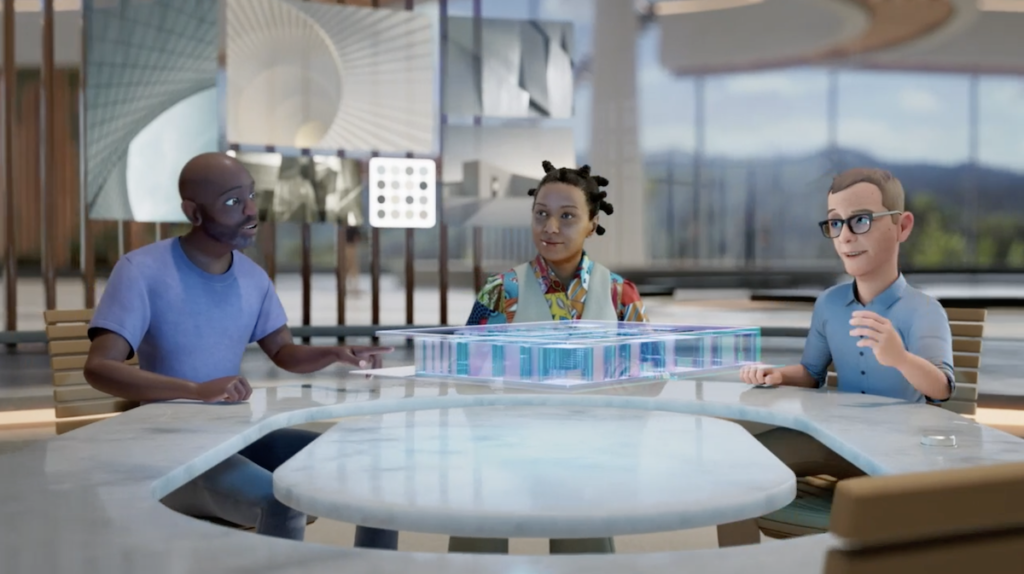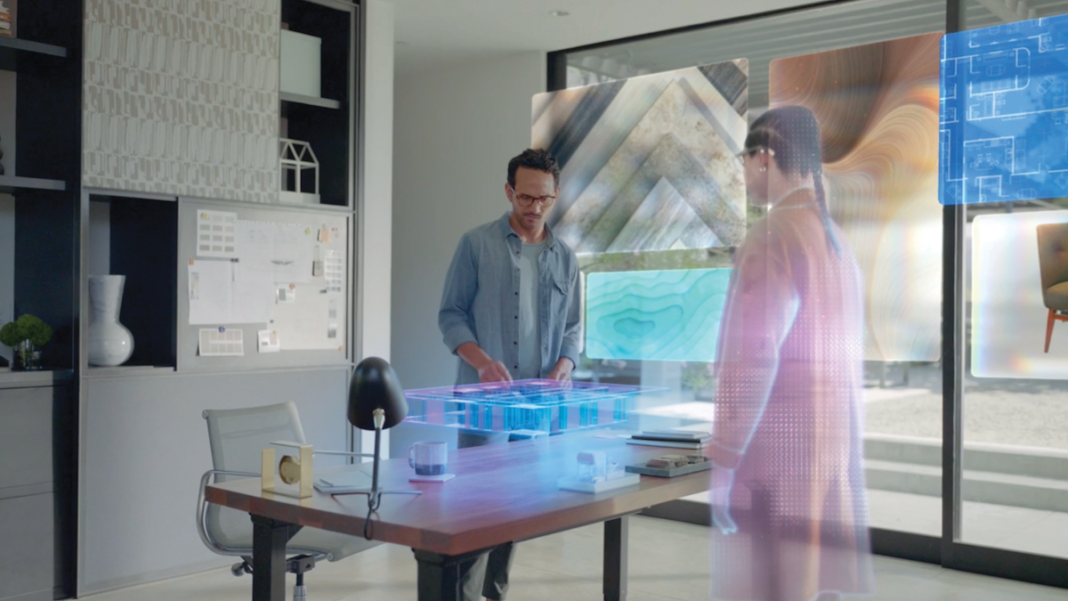A few weeks ago I spoke with Kate Randle, public policy manager with Meta—formerly Facebook—on what she refers to as “the next phase of the internet.” Social media and communication platforms, while still a priority, she says, are no longer Meta’s primary focus, as it pioneers a new frontier in internet capacity and utilization. The name Meta was chosen, said Meta CEO Mark Zuckerberg, because it “reflects the full breadth of what we do and the future we want to help build.”
Zuckerberg also said he chose Meta for its Greek meaning—beyond, transcending, dealing with the fundamental matters of. As in metaphysics—the science of that which transcends the physical. This is a move to change the geography of technology, on a global scale.
In my conversation with Randle, we discussed how Meta’s changes might impact what she refers to as a “cornerstone” of their focus, small businesses. Here is our conversation on the next phase of digital customer service as offered by Meta.
JV— Can you tell me more about the decision to switch over from Facebook to Meta?
KR— We feel that this name accurately reflects what we think is going to be the next chapter of the internet—which is the metaverse. So we’re continuing to have our legacy products—Facebook, Instagram—but we hope that this name reflects our commitment to building what we see as the next phase of the internet, which will be a more immersive set of digital spaces that will kind of layer above the existing internet today.
JV— Interesting … layer above the existing internet. “Immersive” and “layer above” seem a bit contradicting, is this an integration of the internet more deeply into the daily human experience?
KR— Yeah, I think you can think of it that way. The metaverse doesn’t exist yet, so this is all imagined based on what we expect this to look like, and of course we’re just one of many companies working to build this next phase, but you can think of how you access the internet today, through a screen or your computer, mobile device, etc. We see the metaverse offering a set of digital spaces you can access through potentially wearable technology, or other access points that are potentially more immersive. But at the end of the day you can still use your computer or phone to enter into these spaces. It’s meant to be an additional access point to the internet rather than to supplant how the internet operates.
JV— And in terms of wearable technology, are we talking about glasses, watches? What are we thinking?
KR— In terms of what we’re working on today, we have the Oculus headset, but we’re working on future technology that will allow people to engage with the metaverse without looking directly at their screen. Things like watches, glasses, other types of wearable we haven’t imagined yet, that will allow people to have a more engaged experience through the metaverse.

JV— This is all very intriguing. So in terms of small businesses, they’re obviously not necessarily early adopters, there can be a fracturing that happens when tech moves forward really quickly and small businesses struggle to keep up. How is Meta working to address this?
KR— We see so much of the internet’s current capacity as an opportunity for businesses to connect to consumers. The move to mobile internet, for example, allows for businesses to operate without the investments needed for a brick-and-mortar location, or advertising costs. We see the metaverse as an opportunity to expand access for businesses as well, but to your point it is about businesses being prepared for these changing trends and making sure that they’re able to anticipate consumer activities and desires.
JV— And how does Meta plan to help with that preparation? Say, for example, you have a small business trying to understand a tech-based change in its target demographic, how can a business pivot to meet those changing needs based on its use of Meta?
KR— In the short term, people are going to experience the metaverse through 2D apps, so think of things like Facebook Shop or Instagram Shop, where customers are able to reach their consumers, but in the future this will be the bridge to the metaverse. A good use case to ground this in reality is, you can imagine a furniture company that uses AR [augmented reality] to look at a room and help a customer place furniture before buying. We have an augmented reality company called Spark AR that allows you to create filters that might allow a customer to see what glasses look like on their face, or what certain makeup looks like on their face. So implementing this technology into something like ads or into an existing social channel is a great way to help customers experience a product before purchasing it.
JV— That seems useful and definitely applicable. A potential pain point I could see small businesses facing in adopting something like Spark AR is that it detracts from a personal relationship they might otherwise cultivate with a customer. Is Meta viewing this as the next level of customer service?
KR— Exactly, we are. And this is not meant to take over personal or in-person interactions. I think from a personal standpoint, certainly there are some stores where I’ll want to go in, chat with my local shopkeeper, get updates on new inventory and get recommendations. But this could be an opportunity for a small business to reach a customer that maybe doesn’t live nearby or doesn’t have the time to come in person. It’s not about replacing the in-person relationship management, it’s about broadening the opportunities for businesses to engage with other customers.
JV — So suddenly a small business has the opportunity to be a global business.
KR— Exactly, and we’ve seen that with the expansion of the mobile internet, and companies leveraging platforms like Facebook and Instagram to connect with customers all over the world. We see this as an additional layer on top of that, an additional tool to help people reach customers.
JV— So, how accessible is it? How affordable? How available?
KR— The tools I’m talking about now—Instagram Shop, Facebook Shop—you can go on and create for free and leverage these opportunities to connect with people. Our goal as a company, and Mark [Zuckerberg] said this when he announced the name change, is to keep these technologies affordable and accessible. Small businesses continue to be a cornerstone of our priorities, and as we build we’re going to continue providing resources and support to help those businesses leverage our product.
JV— I didn’t realize Meta considered small businesses a cornerstone.
KR— Absolutely. We see small businesses and small-business development as really crucial to our business. We support so many businesses that have been able to create their shops directly on our platforms, because they’re free. Our goal is to connect people, and that includes helping businesses grow and keeping them connected with their consumers.
JV— That’s interesting to hear. The metaverse is such a massive conglomerate that it’s support of small businesses isn’t immediately obvious, but your outline does make sense, and I do know many small businesses that use Instagram almost primarily, for PR, sales, marketing, etc.
KR— Absolutely. The affordability of a custom ad on Instagram Shop, geared towards a target demographic, is an amazing opportunity for small businesses looking to grow but without the capital for an ad on primetime television or other mainstream traditional means.
JV— Is there a particular tool that Meta really wants small businesses to be aware of?
KR— [We are] continuing to impress on small businesses the value of our 2D platforms like Facebook and Instagram Shop, and to support the integration of Spark AR as an additional tool in customer service and the beginning of the next wave of technological tools. These channels that we have, and an eye towards what’s to come, is how businesses will benefit the most.
Jane Vick is a painter, writer and journalist who has spent time in Europe, New York and New Mexico. She is currently based in Sonoma County. Connect with her at janevick.com.










